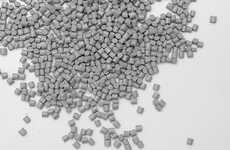
This Year's Oscars Statues Were Created with Additive Manufacturing
Laura McQuarrie — March 1, 2017 — Art & Design
References: 3ders.org
The design of the Oscars award statuettes that were given out at the recent 89th Academy Awards show may have taken a page from the past with a design that takes cues from the original statue design, but the statues themselves were created with cutting-edge technology.
Polich Tallix Fine Art Foundry in New York was tasked with the creation of these 3D-printed Oscars statues, which involved digital scanning, 3D printing, molding and casting the figures in wax. After the figures were coated in a ceramic shel and cast in bronze, the finished layer of the statues were given a reflective, permanent layer of 24-karat gold.
Another example of an award design that is both meaningful and precious are the medals that will be created for the Tokyo 2020 Olympic games from e-waste.
Polich Tallix Fine Art Foundry in New York was tasked with the creation of these 3D-printed Oscars statues, which involved digital scanning, 3D printing, molding and casting the figures in wax. After the figures were coated in a ceramic shel and cast in bronze, the finished layer of the statues were given a reflective, permanent layer of 24-karat gold.
Another example of an award design that is both meaningful and precious are the medals that will be created for the Tokyo 2020 Olympic games from e-waste.
Trend Themes
1. 3d-printed Awards - The trend of 3D-printed awards is disrupting traditional production methods and materials in the awards industry.
2. Digital Scanning - The trend of digital scanning is disrupting traditional sculpting and moulding processes in the fine art industry.
3. Sustainable Precious Metals - The trend of using sustainable precious metals is disrupting the traditional methods of sourcing and using precious metals in awards and jewelry industries.
Industry Implications
1. Awards and Recognition Industry - The award and recognition industry can adopt 3D printing and digital scanning to produce unique designs that are cost-effective and more sustainable.
2. Fine Art Industry - The fine art industry can adopt digital scanning and 3D printing to create detailed sculptures that are more cost-effective and efficient.
3. Jewelry Industry - The jewelry industry can adopt sustainable precious metals to reduce their environmental impact and meet the growing demand for eco-friendly products.
3.4
Score
Popularity
Activity
Freshness























